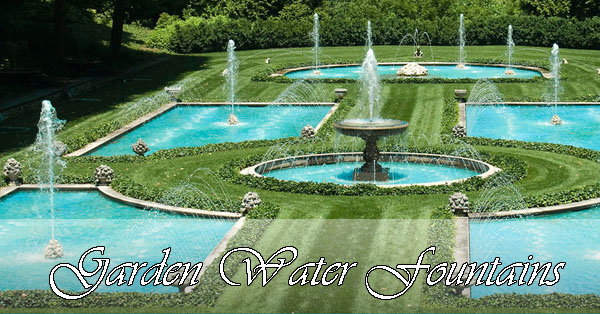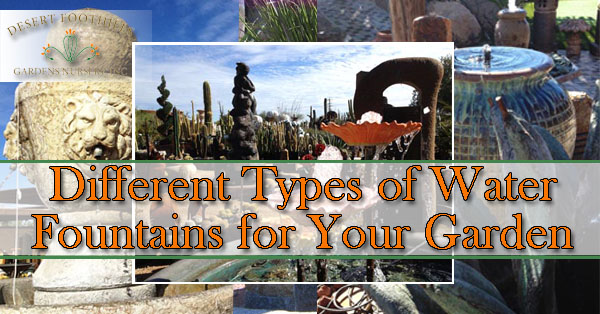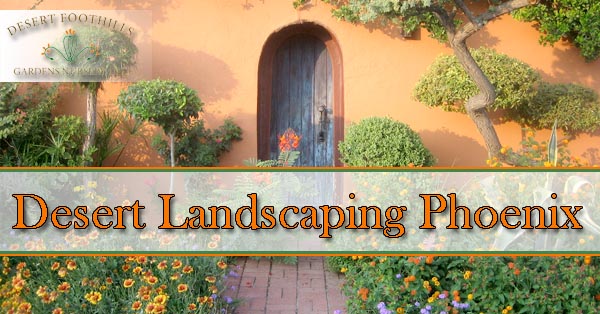Garden Soil Vs. Potting Mix | Differences

For a lot of gardeners they had to learn the advantages are for garden soil vs. potting mix. Depending on the application with consideration of the nutrient retention and moisture of the soil, then you will want one over the other. Being able to know that different types of soil can mean a big difference in having a satisfying and successful gardening season and simply wasting effort and time trying to cultivate the ground that just won’t reward your efforts with a good garden.
Potting Soil
Potting mix is manufactured and it doesn’t actually contain much organic material. The biggest feature of potting mix is that it can retain moisture in a container that has several plants. Although, as time goes on the mix can become dry and will repel water with age. Whenever this happens, topping the potting mix with organic material is needed to keep your potted plants thriving.
Gardening Soils
Garden soil usually come in 50/50 mixes. These are great for open beds instead of pots. This is because these types of soil will retain too much moisture when in an enclosed container unlike being exposed to the open. Garden soil also has a tendency to pull away from the containers when it dries out. There are even some soils that have clay in them that is too heavy for a pot and will compact and settle like concrete.
Loam vs. top soil
Top soil is the highest layer of soil and it can be 12 inches deep. Relying on what organic matter lands on the top soil can really vary between being worth nothing and nutrient rich. Also relying on the area will depend on if there is silt, clay or sand in the soil. Additionally, depending on your area and previous owners it may also contain chemicals such as pesticides.
Loam is soil that has silt, clay, and sand evenly distributed in it. Normally loam will contain 50% sand, 7-20% clay and 30-40% silt. When people state that they are selling loam, it is vital to know that calling it loam doesn’t state the organic material but that it has various soil types in it.
It is quite easy to confuse loam and top soil because you could have loam in your yard. To remember them top soil is the location of the soil and loam is the quality of the soil being a balance of various soil types.
Whenever you purchase top soil, a good rule is to pay attention to the type of top soil that you are being offered. It could be just regular top soil or loam top soil. You may judge it yourself and what you should look for is the soil to be crumbly not gritty or sticky. It needs to be firm enough to roll between your hands when wet.
Garden soil types
There are 6 types of soils that you may find. They way that you group them in your garden will depend on what you have in your soil the most.
Clay Soil
Clay soils will have over 25% clay. It is also called heavy soil. Despite that it is high in nutrients, it has a tendency to retain a lot of water. This means that it takes much longer to drain and a lot longer to warm up unlike sand. During the summer the soil may get so dry that it cracks. During wet months it can be easily compacted if walked on when wet. This is a challenging type of soil to grow in, but with the right plants and some patience its rewarding.
Chalky Soil
Chalky soil has larger grained and will have a stonier consistency unlike other soils. This soil is free draining and will sit over limestone or chalk bedrock. It has high alkalinity can lead to stunted growth and yellow leaves. This can be fixed by adding fertilizer to fix the pH and adding humus to fix the quick drain and improve the workability.
Sandy Soil
Sandy soils will have mostly sand in the soil. It is known as light soil. During rain storms or watering, it will drain quickly and will be easy to cultivate and work. During the morning and spring they will warm up quickly than clay. It doesn’t really hold nutrients and it dries quickly. It also has high acid levels.
Silt Soil
Silt soil is in between clay and sand soil. It has a mineral origin of quartz and feldspar. It is mainly found in places where rivers and lakes had existed. It is considered to be the most fertile soil. It drains better than clay but has enough moisture to support plant growth.
This is great for perennials, grass, climbers and shrubs. Trees such as Dogwood, Willows, Birch, and Cypress love this soil because of the moisture. It is also good for vegetable and fruit crops if there is enough drainage.
Loam Soil
Loam soils is a combination of multiple soil types and avoids the extremes of sandy and clay soils while being quite fertile. Loams are easy to work and will drain well. There are sandy-loam and clay-loam variants depending on the characteristics.
This soil is great for most berry and vegetable crops. It can also grow shrubs, perennials, bamboo and much more. This is a great option for a serious gardener. It does take a bit to maintain it by rotating crops and maintain the moisture, especially during dry and hot months.
Peat Soil
Peat soils are mainly made of organic matter and are quite fertile and will hold plenty of moisture. However, you will rarely find it in gardens. Peat soil is considered peat soil when it has over 30% organic matter or dry mass that has gathered and composted on the surface. It is basically a mix of decomposed plant material that has decayed in an oxygen free and water saturated environment.
This is great soil for root crops that need well drained soils to thrive. You can have a lot of success with growing things such as lantern trees, witch hazel, heather and camellia. When it comes to vegetables that absolutely love this soil, you will find root crops, legumes, and some salad type crops really excel within this soil.
Phoenix Valley Nursery & Gardening Center
If you are looking for wide selection of soils or potting mix along with healthy plants to buy from a nursery Desert Foothill Gardens is the place for expert advice, the best plants, and landscaping design. Stop by to talk about what you want to grow and we will help you find the right soil and the right location to plant your new plants.
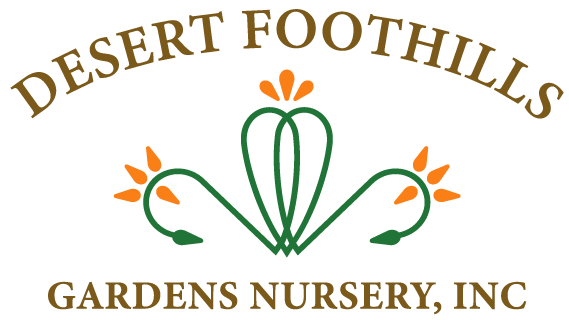


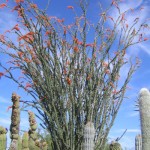 Ocotillo (Fouquieria splendens) are one of simplest plants to identify in the Sonoran desert. They are a larger shrub with elongated cane like un-branched spiky stems that grow from its short trunk. Small 2 inch leaves grow from its stems when there is enough moisture around. Thick clusters of red tube-like flowers grow from the end of its stems from March through June.
Ocotillo (Fouquieria splendens) are one of simplest plants to identify in the Sonoran desert. They are a larger shrub with elongated cane like un-branched spiky stems that grow from its short trunk. Small 2 inch leaves grow from its stems when there is enough moisture around. Thick clusters of red tube-like flowers grow from the end of its stems from March through June.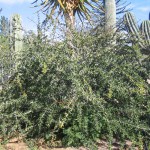 Boojum trees are a large stem succulent plant that can grow up to 54 feet high with a gently narrowing trunk, very much like that of a tall candle, up to 1-1/2 feet wide at its base. The trunk has a number of pencil-like branches with temporal leaves. On older boojum trees, its main trunk divides into two or more stems near the top of the tree which looks like the arms of an octopus. The creamy yellowish tube like flowers, bloom from July to August.
Boojum trees are a large stem succulent plant that can grow up to 54 feet high with a gently narrowing trunk, very much like that of a tall candle, up to 1-1/2 feet wide at its base. The trunk has a number of pencil-like branches with temporal leaves. On older boojum trees, its main trunk divides into two or more stems near the top of the tree which looks like the arms of an octopus. The creamy yellowish tube like flowers, bloom from July to August.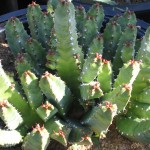
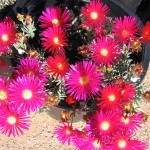 These low-growing succulents are all identified as ice plants. Delosperma species, most of which come from South Africa, are the best ice plants for the South (they do especially well in the Sonoran desert). They usually don’t grow more than a few inches high but spread to form low growing mats ideal for covering an embankment or slope. Small daisy-like flowers, ranging purples and pinks to yellows (about 2 inches across) appear above its small, succulent leaves, which may be flat or cylindrical.
These low-growing succulents are all identified as ice plants. Delosperma species, most of which come from South Africa, are the best ice plants for the South (they do especially well in the Sonoran desert). They usually don’t grow more than a few inches high but spread to form low growing mats ideal for covering an embankment or slope. Small daisy-like flowers, ranging purples and pinks to yellows (about 2 inches across) appear above its small, succulent leaves, which may be flat or cylindrical.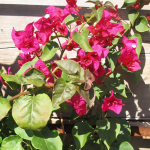 The Bougainvillea comes in many different variations. Bougainvillea loves the heat and sun and is a remarkably drought tolerant plant once rooted and stable. They bloom throughout the spring and fall seasons. While exceedingly hardy in the Sonoran desert heat, the bougainvillea can be marred by a strong frost and should be properly covered from the cold. With a plethora of colors, sizes and shapes make it a very popular landscaping plant.
The Bougainvillea comes in many different variations. Bougainvillea loves the heat and sun and is a remarkably drought tolerant plant once rooted and stable. They bloom throughout the spring and fall seasons. While exceedingly hardy in the Sonoran desert heat, the bougainvillea can be marred by a strong frost and should be properly covered from the cold. With a plethora of colors, sizes and shapes make it a very popular landscaping plant.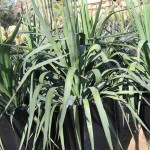
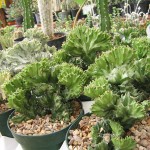 A coral cactus (euphorbia lactea crest) is clearly not a real cactus. It is actually a euphorbia plant that has a rare deviation, which causes it to grow with a crest-type appearance. Because this fascinating mutation is rare, the coral cactus is a very sought-after plant. This interesting plant closely looks like an ocean coral. It is extremely tough and needs almost no maintenance to survive. Its green and pinkish color makes it a popular choice in many landscapes, even though it can also be used to improve the appeal of the atmosphere indoors. It is a smaller plant that doesn’t grow more than 25 inches in height.
A coral cactus (euphorbia lactea crest) is clearly not a real cactus. It is actually a euphorbia plant that has a rare deviation, which causes it to grow with a crest-type appearance. Because this fascinating mutation is rare, the coral cactus is a very sought-after plant. This interesting plant closely looks like an ocean coral. It is extremely tough and needs almost no maintenance to survive. Its green and pinkish color makes it a popular choice in many landscapes, even though it can also be used to improve the appeal of the atmosphere indoors. It is a smaller plant that doesn’t grow more than 25 inches in height.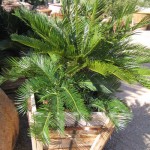

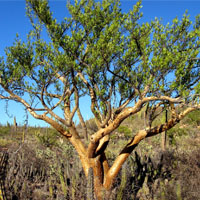 This plant is considered rare in the US within the Anza Borrego Desert State Park region, Santa Rosa Mountains, Sonoran Desert and parts of the southwestern area of Arizona. This is a plant that is normally made to adapt to a desert climate, that has a thick trunk that will store water for days. It is small, and the branches are small when compared to the size of the trunk. It does also store water in the lower wood and limbs, apart from the trunk. The foliage on the plant is lightly distributed that has long, flat legume like leaves that are paired leaflets. The flowers on it are rounded yellow structures in bud form and will then turn into small star shaped cream or white colored flowers. Many of the species of this plant are drought deciduous because of the warm climate and will have leaves throughout the year, except during extreme cold weather and droughts.
This plant is considered rare in the US within the Anza Borrego Desert State Park region, Santa Rosa Mountains, Sonoran Desert and parts of the southwestern area of Arizona. This is a plant that is normally made to adapt to a desert climate, that has a thick trunk that will store water for days. It is small, and the branches are small when compared to the size of the trunk. It does also store water in the lower wood and limbs, apart from the trunk. The foliage on the plant is lightly distributed that has long, flat legume like leaves that are paired leaflets. The flowers on it are rounded yellow structures in bud form and will then turn into small star shaped cream or white colored flowers. Many of the species of this plant are drought deciduous because of the warm climate and will have leaves throughout the year, except during extreme cold weather and droughts.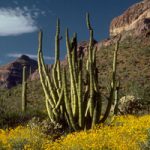 This species of cactus is found within the rocky deserts of the US and Mexico. It has narrow stems that will grow straight from a small trunk right above the ground. The stems will normally not grow into branches and then spread as they grow every year from the tip of each stem. It will take around 150 years for this plant to reach a mature stage. The older plants will produce light pink or purple tinted flowers that will have special characteristics. The flowers will stay open at night and close at the rise of the sun. The fruits that this plants produce are said to be tastier than a watermelon. They are food for many native American tribes and are also used as a medicine. The plant is pollinated by bats.
This species of cactus is found within the rocky deserts of the US and Mexico. It has narrow stems that will grow straight from a small trunk right above the ground. The stems will normally not grow into branches and then spread as they grow every year from the tip of each stem. It will take around 150 years for this plant to reach a mature stage. The older plants will produce light pink or purple tinted flowers that will have special characteristics. The flowers will stay open at night and close at the rise of the sun. The fruits that this plants produce are said to be tastier than a watermelon. They are food for many native American tribes and are also used as a medicine. The plant is pollinated by bats.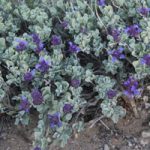 This is a beautiful shrub that ranges about 3 meters tall. The flowers on it are deep blue with purple bracts. The striking feature of this plant is that it doesn’t need to be watered once it has been established. These plants are drought resistant. They conserve solar energy and will blossom during precipitation. The plants also have medicinal properties and different tribes made infusions of stems and leaves of this plant as a cure for the common cold. It was also used to treat the flu, pneumonia, headaches, stomach aches, and some eye problems.
This is a beautiful shrub that ranges about 3 meters tall. The flowers on it are deep blue with purple bracts. The striking feature of this plant is that it doesn’t need to be watered once it has been established. These plants are drought resistant. They conserve solar energy and will blossom during precipitation. The plants also have medicinal properties and different tribes made infusions of stems and leaves of this plant as a cure for the common cold. It was also used to treat the flu, pneumonia, headaches, stomach aches, and some eye problems.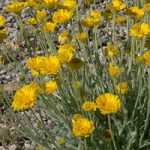 This plant belongs to the aster family and is normally found in the southwestern areas of Mexico and the US. They are an annual as well as short lived perennial plants that will grow to around 30 inches tall and will have hairy leaves. These hairs help them to survive in extreme conditions by increasing light reflection, which lowers the leaf temperatures as well as blocks UV rays. The flowers on this plant will grow and are colored bright yellow, which is where their name comes from. These spring wild flowers will start blooming in March and stay in bloom until November. During the rains, these flowers will bloom more and then the stone slopes that they grow on will look like bright yellow carpets. The flowers are very poisonous and large numbers of sheep have died due to these flowers.
This plant belongs to the aster family and is normally found in the southwestern areas of Mexico and the US. They are an annual as well as short lived perennial plants that will grow to around 30 inches tall and will have hairy leaves. These hairs help them to survive in extreme conditions by increasing light reflection, which lowers the leaf temperatures as well as blocks UV rays. The flowers on this plant will grow and are colored bright yellow, which is where their name comes from. These spring wild flowers will start blooming in March and stay in bloom until November. During the rains, these flowers will bloom more and then the stone slopes that they grow on will look like bright yellow carpets. The flowers are very poisonous and large numbers of sheep have died due to these flowers.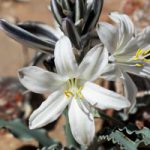 This plant is also called the Hesperocallis is a flowering plant that is found within the desert areas of North America, California, Arizona, and Mexico. These flowers are actually funnel shaped and cream colored that will bloom in March and stay until May. This plant is a common sight in deserts and the leaves around an inch wide and will grow up to 20 inches wide. When it comes to appearance, this plant looks similar to Easter Lilies. The Desert Lily has deep bulbs that will send stems early in spring and the bulb is often used as a food by Native Americans.
This plant is also called the Hesperocallis is a flowering plant that is found within the desert areas of North America, California, Arizona, and Mexico. These flowers are actually funnel shaped and cream colored that will bloom in March and stay until May. This plant is a common sight in deserts and the leaves around an inch wide and will grow up to 20 inches wide. When it comes to appearance, this plant looks similar to Easter Lilies. The Desert Lily has deep bulbs that will send stems early in spring and the bulb is often used as a food by Native Americans.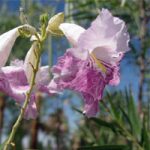 This plant is also called the Chilopsis and is small, delicate deciduous shrub or tree found in Mexico and the US. The flowers for this plant bloom in May and will stay until September. The flowers are normally lavender and light pink in color. The lower lip and throat is beautifully designed to have purple lines and yellow ridges. large bees will often pollinate these flowers. It often happens in clusters and is able to deal with arid desert conditions, which certainly makes this a great desert plant.
This plant is also called the Chilopsis and is small, delicate deciduous shrub or tree found in Mexico and the US. The flowers for this plant bloom in May and will stay until September. The flowers are normally lavender and light pink in color. The lower lip and throat is beautifully designed to have purple lines and yellow ridges. large bees will often pollinate these flowers. It often happens in clusters and is able to deal with arid desert conditions, which certainly makes this a great desert plant.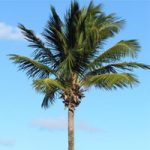 Palm trees often grow in subtropical, tropical humid and hot conditions, as they are not able to stand the cold. They have a variety of species which comes to just over 2600. They have long stems, which is unbranched and have clusters of long leaves at the top of stem. Palms have often remained one of the most cultivated plants till this date. Most products are often made from palm trees, so they are economical. The uses of palm trees are plentiful. edible oil is made from palm trees, coconut form palm trees, palm sap is fermented to make palm wine, as we know are very beneficial, and the coir from the outer part of coconut shells are used to make ropes, mattresses and brushes.
Palm trees often grow in subtropical, tropical humid and hot conditions, as they are not able to stand the cold. They have a variety of species which comes to just over 2600. They have long stems, which is unbranched and have clusters of long leaves at the top of stem. Palms have often remained one of the most cultivated plants till this date. Most products are often made from palm trees, so they are economical. The uses of palm trees are plentiful. edible oil is made from palm trees, coconut form palm trees, palm sap is fermented to make palm wine, as we know are very beneficial, and the coir from the outer part of coconut shells are used to make ropes, mattresses and brushes. The saguaro is a species of cactus. They have long lifespans of around 150 years, but the growth depends on the precipitation amount within the desert. The spines grow rapidly, and will grow around a millimeter daily. The flowers will bloom at night and stay from April to June. The flowers are yellow and white and the ruby red fruits are eaten by locals and there are over 2000 seeds in each of them which makes it easy to pollinate. The fruits are not able to be hand-picked, because of the long spines of the tree so they have to be plucked using a long pole.
The saguaro is a species of cactus. They have long lifespans of around 150 years, but the growth depends on the precipitation amount within the desert. The spines grow rapidly, and will grow around a millimeter daily. The flowers will bloom at night and stay from April to June. The flowers are yellow and white and the ruby red fruits are eaten by locals and there are over 2000 seeds in each of them which makes it easy to pollinate. The fruits are not able to be hand-picked, because of the long spines of the tree so they have to be plucked using a long pole.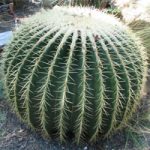 Barrel cactus happens to be the most common desert plant all over the world. It can be up to 10 meters tall and the buds on this plant will grow around April and the color will vary for each blossom. It may be pink, red, orange, or yellow. The spines on the barrel cactus need to be handled with care, because if you are pricked by one of them, you may need antibiotics to fight the effects of the barrel cactus. The plants look beautiful and are developed in nurseries or personal gardens to be an ornamental plant.
Barrel cactus happens to be the most common desert plant all over the world. It can be up to 10 meters tall and the buds on this plant will grow around April and the color will vary for each blossom. It may be pink, red, orange, or yellow. The spines on the barrel cactus need to be handled with care, because if you are pricked by one of them, you may need antibiotics to fight the effects of the barrel cactus. The plants look beautiful and are developed in nurseries or personal gardens to be an ornamental plant.